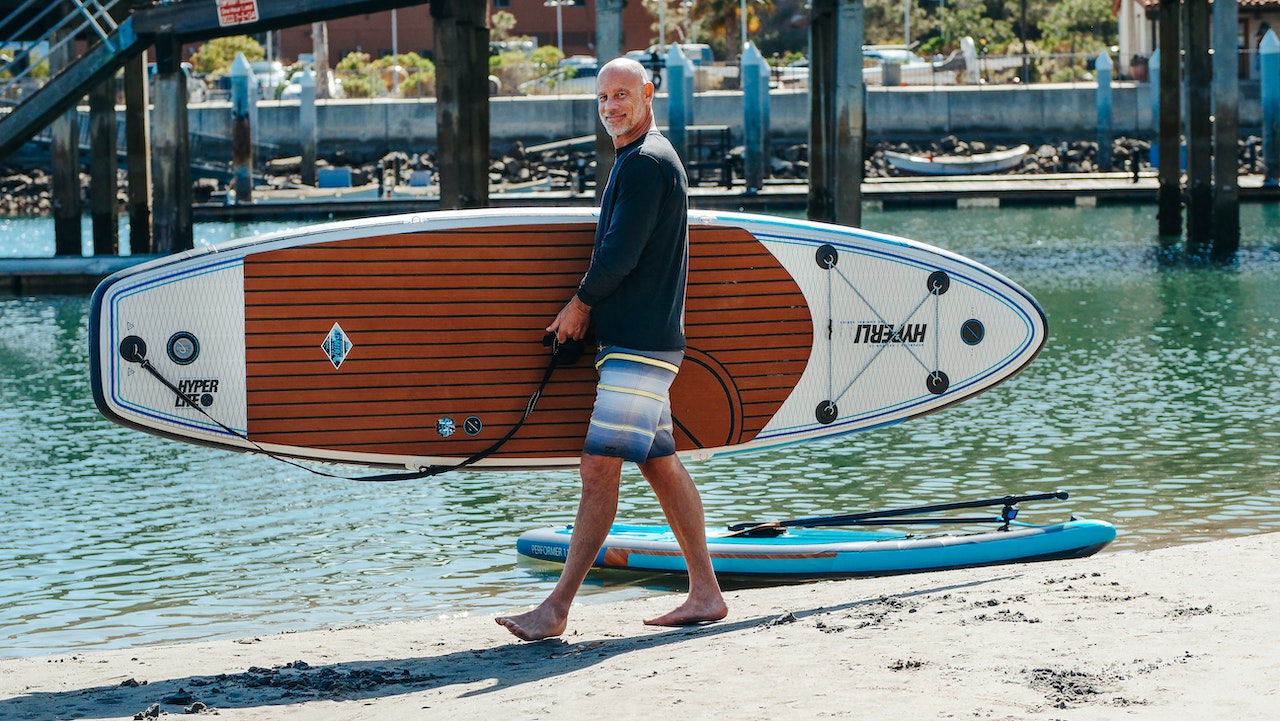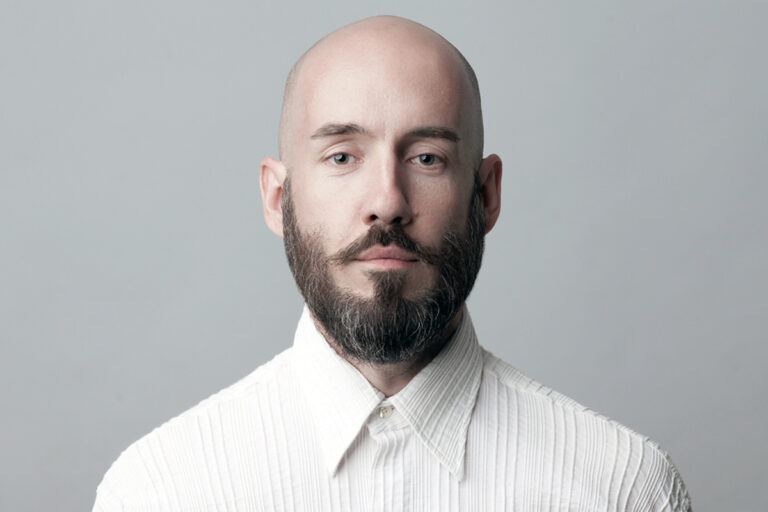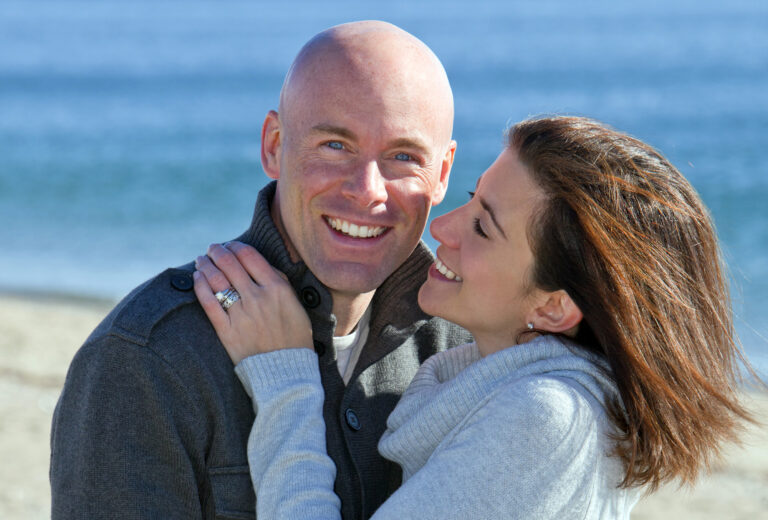How to Tan Your Bald Head? (4 Best Ways)

The most common way to tan a bald head is direct sun exposure, but it’s essential to do it safely to avoid sunburn and other potential skin issues.
Always apply a high SPF sunscreen (SPF30+) and avoid peak hours (11 AM to 4 PM).
Here’s a quick overview of all the scalp tanning options we have.
| Sun Exposure | Sunbeds | Spray Tan | Self-Tanners | |
| Pros | +Natural method +Vitamin D boost+Even tan | +Fast and convenient+Tone customization | +Fast results+Safer alternative to sun | +No harmful UV light+Fast results+DIY option |
| Cons | -Harmful UV rays -Sunburn risk-Tan lines-Time consuming | -Increased risk of skin damage-Potential dryness or irritation | -Lasts 5-7 days-Bad odor-Potential messiness | -Even tan is difficult-Distinct smell-Fade in few days-May stain if wet |
| Price | +Free | -Costly | -Costly | +Cheap |
How to Tan Your Bald Head?
1. Direct Sun Exposure
Pros
- Relaxing experience
- Natural method without artificial tanning products
- Very cheap, the only cost is the sunscreen (SPF30+)
- Vitamin D boost, which has numerous health benefits
- Even tan without any missed spots
Cons
- Sun UV rays can damage your skin and increase the risk of skin cancer
- Bald head sunburn is extremely painful, leading to peeling or irritated scalp afterward
- Uncareful tanning with hats/sunglasses will result in unwanted tan lines
- Time-consuming process takes several sessions
One of the easiest and most natural ways to get a bald head tan is by simply spending some time in the sun.
Just imagine yourself lounging outside with a cold drink, soaking up those warm rays while giving your scalp that golden glow. It’s like a mini vacation for your hairless dome!
But, according to the FDA, there is no such thing as safe sun exposure.
Sun rays cause an increase in skin pigment called melanin, which increases your risk of developing skin cancer. (1)
But it’s not realistic to avoid the sun for the rest of your life.
Research also suggests the best way to manage potential risks is to limit your exposure to the sun, wear a high SPF sun protection, and choose the right time of day. (2)
How to Reduce Risks
If you decide to embrace the sunshine as your tanning method of choice, here are some steps to keep in mind:
- Always apply a broad-spectrum sunblock with at least SPF 30
- Best time for sun exposure is usually early morning or late afternoon when the sun’s rays are less intense, avoid peak hours of 10 AM to 4 PM
- Start gradually 10-15 minutes in the first days up to 30 minutes later to prevent sunburn
- After tanning a bald head, always apply a moisturizer or aloe vera to soothe and hydrate your scalp
- Don’t forget to drink plenty of water while you’re out in the sun to stay hydrated
2. Sunbeds
Pros
- Quick and convenient way to achieve a head tan
- Controlled exposure time allows for customization based on individual preferences
- Can help boost vitamin D levels during winter months or in areas with limited sunlight
- Tanning sessions provide a relaxing experience for some individuals
- May improve self-confidence by enhancing appearance
Cons
- Increased risk of skin damage and potential health concerns associated with excessive UV exposure
- Costly if used frequently or long-term memberships required
- Potential dryness or irritation of the scalp due to intense heat from the bulbs
- Limited control over intensity levels in some salons may result in uneven tans or burns
- Not suitable for everyone (fair skin or certain medical conditions)
Sunbeds are another common way to achieve a decent scalp tan. The main benefit of using sunbeds is convenience. Just visit a tanning salon and hop into the tanning bed.
Sunbeds emit UV rays that mimic the sun’s natural tanning process. This means that you can achieve a golden glow on your scalp without having to spend hours under the scorching sun.
But, according to the American Dermatology Association (AAD), tanning beds are not safer than direct sun exposure. (3)
The evidence that indoor artificial tanning dramatically increases your risk of getting skin cancer is so strong that the FDA requires warning labels on all indoor tanning equipment.
How to Reduce Risks
But if you still decide to give sunbeds a try, here are some steps to ensure you do it safely:
- Consult with a professional at the tanning salon to assess your skin type and determine the appropriate session duration
- Always protect your eyes by wearing UV-blocking goggles designed for indoor tanning
- Apply a broad-spectrum sunscreen with SPF 30 or higher on all exposed areas of your scalp before each session
- Start with shorter sessions and gradually increase exposure time if necessary, based on how your skin reacts
- Moisturize your scalp after each tanning session to keep it hydrated and prevent dryness
Remember, moderation is key when it comes to using sunbeds. It’s important to balance enjoying the benefits of a tan while prioritizing the health and safety of your bald head.
3. Spray Tan
Pros
- Tan accelerator, as it can be applied in just minutes, you will get a tan fast
- You can choose the intensity of your tan by selecting different shades or adjusting how many layers you apply
- Safer alternative to sun, since there’s no exposure to UV radiation
- With proper application, you can achieve a seamless look on your entire head
- Temporary solution, the tan will fade gradually over time
Cons
- Temporary solution, the color from a spray tan typically lasts around 5-7 days before it starts fading noticeably
- Potential messiness: Depending on the product used and technique applied, there might be some overspray or staining on towels/clothing
- Regularly spray tans can get expensive
- The odor of certain self-tanners is unpleasant due to their chemical composition
A spray tan is another sunless tanning option for tanning a bald head. You will get a natural-looking tan without exposing it to harmful UV rays from the sun or tanning beds.
Spray tanning involves the use of a handheld spray gun or automated spray booth to apply a fine mist of tanning solution directly onto the skin.
According to FDA, sunless tanning delivers a faux glow by coating your skin with the chemical dihydroxyacetone (DHA). (1)
DHA interacts with the dead surface cells in the epidermis to darken skin color and simulate a tan.
PS! Most sunless tanning sprays and lotions do not contain a skin protecting sunscreen. Make sure you apply an even coat of sunscreen to all exposed skin at least 30 minutes before going outdoors.
The main benefit is that it provides instant and even coverage, giving you results fast. However, the color may not last as long as with other methods.
How to Reduce Risks
According to FDA, DHA should not be inhaled, ingested, or exposed by the lips, nose, and areas in and around the eye because the risks, if any, are unknown. (1)
When choosing a tanning salon, ask these questions to make sure you will be protected:
- Will my eyes and the area surrounding them be protected?
- Will my nose, mouth, and ears be protected?
- Will I be protected from inhaling the tanning spray through my nose or mouth?
If the answer to any of these questions is “no,” look for another salon. Otherwise, you are putting yourself at risk for exposure to chemicals with potentially dangerous effects.
Remember, always read and follow the instructions provided with your chosen spray tan product for the best results.
4. Self-Tanning Products
Pros
- Safest alternative to direct sun exposure and sunbeds
- Convenient DIY option you can do in the comfort of your home
- You have control over how dark or light you want your tan to be
- Most self-tanning products show noticeable results within hours
- Cheap, compared to spray tans or salon treatments
Cons
- Achieving an even application requires practice and attention-to-detail
- Some self-tanners have a distinct smell that might linger on for several hours
- Self tanners often stain your clothes and bedding if not fully dry
- Some may experience allergic reactions or sensitivities toward specific ingredients
- Results usually fade within a few days, requiring regular reapplication
- Some products look unnatural, leaving an orange tint, streaks, or blotches on the skin
The closest way to safely tan a bald head is to use self-tanning lotions.
Self tanners offer an effective way to achieve that sun-kissed tan without exposing your scalp to harmful UV rays.
Although fake tanning has fewer risks than tanning beds or sunbathing, it also doesn’t come without drawbacks.
According to MedicalNewsToday, the DHA in self-tanners can increase the chances of sunburn if someone becomes exposed to sunlight within 24 hours of application. (4)
Additionally, some fake tan products can look unnatural, leaving an orange tint, streaks, or blotches on the skin.
Despite these potential drawbacks, many men find success with self-tanning products for their bald heads. Here are some key pros and cons:
How to Reduce Risks
To safely use self-tanning products on your bald head, follow these steps:
- Avoid direct sunlight within 24 hours of application as DHA in fake tan can increase the chances of sunburn
- Start with clean and exfoliated skin to ensure an even application
- Apply a light moisturizer to any dry areas like the forehead or temples.
- Use smooth and gentle strokes to apply the self-tanner in circular motions, making sure not to miss any spots
- Pay extra attention when blending near hairlines or facial features for a seamless finish
With these tips in mind, you can confidently experiment with self-tanning products and achieve that even tan for your bald head all year round!
How to Treat Bald Head Sunburn?
Dealing with a bald head sunburn requires gentle care and immediate action.
As soon as you notice the sunburn, seek shade or cover your head to avoid further sun exposure.
It’s important to begin treating sunburn as soon as you notice it. According to the AAD, here’s how to get some sunburn relief. (5)
- Cool Compress: Apply cool, damp compresses to the sunburned area. This can help reduce inflammation and provide some relief from the heat.
- Moisturize: Apply an aloe vera gel to your sunburned scalp. This can help soothe the skin and keep it hydrated, reducing peeling and promoting healing.
- Pain killers: Consider taking aspirin or ibuprofen to help reduce any swelling, redness and discomfort.
- Cover the skin: Wear clothing that covers the damaged skin when outdoors. When you hold the fabric up to a bright light, you shouldn’t see any light coming through.
PS! If the sunburn is severe or shows signs of infection, consult your doctor promptly for appropriate medical advice and treatment.
FAQ
Is it safe to tan a bald head?
Tanning a bald head can be safe if done responsibly and with proper sun protection. It’s crucial to use sunscreen with a high SPF, wear a hat when needed, and avoid prolonged sun exposure during peak hours.
Can I use regular sunscreen on my bald head?
Yes, you can use regular sunscreen on your bald head. Choose a broad-spectrum sunscreen with a high SPF (at least 30) and apply it generously to all exposed areas.
Are there specific tanning products for the scalp?
Yes, there are tanning lotions, oils, and sprays designed specifically for the scalp. These products can help achieve a more even and natural-looking tan.
How long should I expose my bald head to the sun to get a tan?
Start with short intervals of 10-15 minutes and gradually increase the time over several days to avoid sunburn. The exact time varies based on your skin type and the sun’s intensity.
What should I do if my bald head gets sunburned?
If your bald head gets sunburned, seek shade immediately and apply cool compresses or take a cool shower. Moisturize with aloe vera gel to soothe the skin and stay hydrated.







